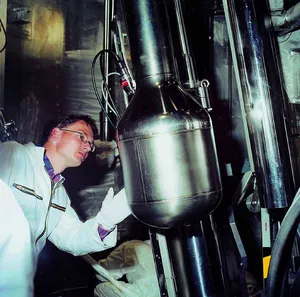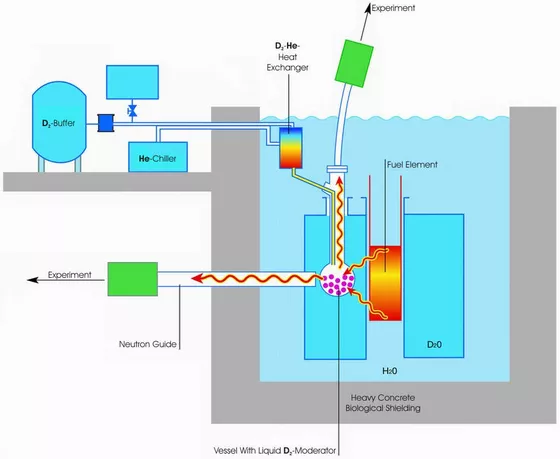Cold Source

The cold source consists of a volume of 12 l of liquid deuterium (heavy hydrogen) at a temperature of 18 K (corresponds to -255 °C). Through collisions with the deuterium, the neutrons are cooled to "cold" neutrons. As the wavelength of cold neutrons fits rather well to the typical dimensions of many solids, the distances of nanostructures in biological samples, for the scientists who operate Neutron scattering and activation experiments they are particularly welcome. At FRM II beam tube 1 and thus the entire neutron guide hall west as well as beam tubes 2 and 4 are supplied with cold neutrons. Out of 32 scientific instruments in total, 19 use only cold neutrons.
In order to operate the cold source at a maximum of the thermal flow in close vicinity to the fuel assembly, one needs, as well as the best possible insulation, high cooling performance. A helium compressor with 500 kW provides the drive power. This is the largest engine operated at FRM II.
